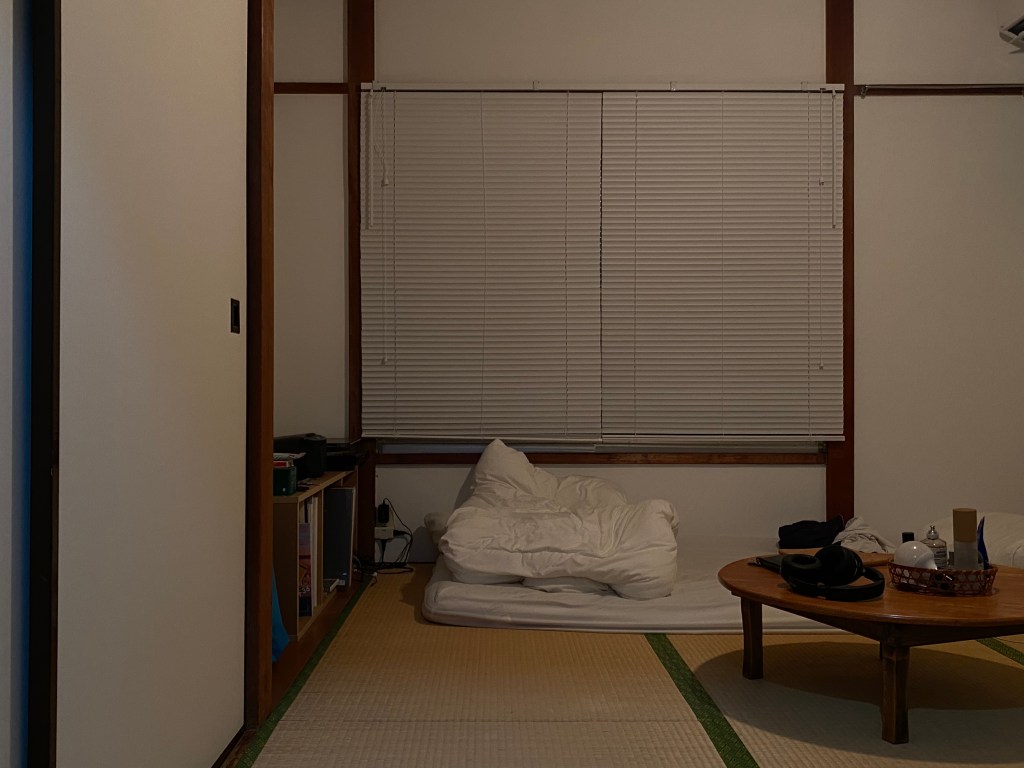TOKYO — Like many people, 27-year-old Tokyo resident Arata Noguchi enjoys a good soak in the bath. It helps the architectural designer wash away stress after a long day’s work.
But unlike most people in the wealthy metropolis, he has to go out for it—his home has no shower or bath.
Videos by VICE
Known as furonashi bukken—literally “no bath”—traditional homes like Noguchi’s 160-square-feet apartment have recently become a subject of debate after a TV channel reported their supposedly rising appeal to nostalgic Japanese youth.
But the seven-minute segment by TV Asahi was met with widespread criticism, with critics saying it romanticized poverty among young people, which has been exacerbated by the COVID-19 pandemic and decades-high inflation.
“If young people had the financial freedom to live in a place with their own bath, I think they would,” Mariko Kobayashi, a mother with two teenagers in Tokyo, told VICE World News. “To me, it just sounds like young people have no choice but to live in these apartments because they can’t afford it.”
On Japanese Twitter, tweets about how young people could be left with little choice but to live in these apartments received thousands of retweets. Other news outlets published articles questioning the outlet’s portrayal of showerless homes.
In the show aired last week, the Japanese broadcaster suggested that more young people were renting showerless homes not because they’re cheaper, but because they enjoy going to public baths, called sentō. The show didn’t mention people forced to live in a furonashi bukken due to poverty.
Seijurou Tsukano, a 42-year-old part-time worker in greater Tokyo, used to live in an old, showerless home for nearly a decade out of financial constraints. He wanted to pay back his sizable debt from horse racing betting and loans he took out to fix his car after a road accident.
At the time, in the early 2000s, the apartment in greater Tokyo cost just 10,000 yen (about $77) a month. He could bathe at a public bath or a gym, but he said the lifestyle was hard to keep up.
“In the end, I bought a plastic kiddie pool and used that as a bathtub,” Tsukano told VICE World News.
Now living in an apartment with a shower, Tsukano remembers—not so fondly—of the time when he had to take a bucket to his building’s communal sink to get water for his pool.
Furonashi bukken were much more common decades ago, when gas heating wasn’t yet ubiquitous in private homes. But there were also far more public baths around. At the peak of the sentō boom, in 1968, there were 18,000 public bathhouses nationwide, a number that has dwindled to about 1,800 today.
An impending recession could make cheap, showerless apartments more appealing to renters, but there are no signs that they’re making a significant comeback in the world’s third-largest economy.
Natsuko Kashima, a real estate agent who manages a website listing Tokyo properties without baths, said she gets inquiries about these apartments about twice a week, but she hasn’t witnessed a recent change in demand. They cost about 20,000 yen ($154) to 40,000 yen ($308) monthly, and account for about four percent of all available homes in Tokyo, she said.
She said renters are usually single and in their 20s or 30s, but the reasons for their choice were varied. Some renters, for example, were minimalists and wanted to live with fewer things in their homes. Others were sentō-lovers who didn’t need a bath of their own.
Kashima could understand. Her grandmother’s house also didn’t have a tub and when she’d visit her during long holidays as a child, her entire family would go to the bathhouse together.
“I remember my female cousins and I would just laugh and play at the sentō—it was so much fun,” she said.
For Noguchi, the designer, living without a shower is a matter of lifestyle.
“I work until pretty late, so I just head to the public bath before getting home. I barely notice the time it takes to travel,” he said.
And it’s also practical.
“It’s mentally taxing when you live in a dirty home, but by getting rid of my shower and going to the sentō each night, I save time on chores—and the bath is clean each time,” he said.
More
From VICE
-

Photo: VICTOR HABBICK VISIONS/SCIENCE PHOTO LIBRARY / Getty Images -

Photo: Ildar Abulkhanov / Getty Images -

Paul Campbell/Getty Images






